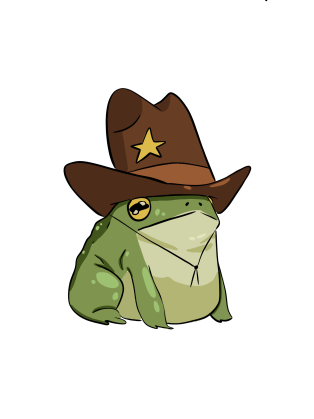Toad
Toad

The toad may not be as flashy as a stallion or as fierce as a rattlesnake, but this humble creature was a common companion on the frontier. With warty skin, squat bodies, and slow, deliberate hops, toads were often spotted near water troughs, shaded wells, and damp patches of land around homesteads and farms.
Though harmless, toads were invaluable in their own quiet way. They fed on insects — beetles, flies, and even grasshoppers — helping settlers keep pests under control in gardens and fields. Their presence was often welcomed, a sign that the land was still balanced enough to support small life even in harsh climates.
In folklore, toads carried a mixed reputation. Some frontier folk considered them lucky, protectors of crops and gardens. Others held onto old superstitions, believing their warts were contagious or that they were omens of misfortune. Despite this, children often made playmates of them, chasing them through tall grasses or watching them plop into shallow puddles after summer rains.
On the Wild West frontier, the toad wasn’t a creature of grandeur, but a quiet symbol of resilience. Small, patient, and persistent, it thrived where others might not — much like the settlers who shared its world.